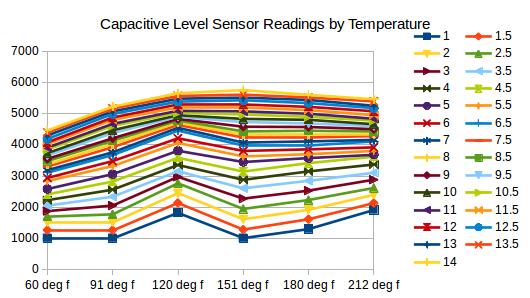ryane
Well-Known Member
Bit of background - Until recently Ive had a sort of modified Kal electric brewing set up, however I had my first child about a year ago now and time to brew is very little so I have began the process for getting together a completely automated brewing rig. This will allow me to still drink and formulate recipes, but skip on some of the mundane brewing tasks
Ive sourced most of my parts and pieces (valves, rims, elements, plc, hmi, etc, etc) and have access to the tools for custom machining many things I need. Yet one thing that I have yet to pull the trigger on is my method for volume/flow measurement. Ideally I would like to be able to measure volume for mash additions and sparging, and probably watch flow rates during my re-circulation.
When first thinking about this issue my thought was to use flow meters (aliexpress ~300$/ea), ultra sonic level meters(automation direct ~200$), or differential pressure transducers (ebay ~50-150$). In fact Ive found sources for all of said instruments for relatively cheaply, but each has its pros/cons.
At first I leaned towards the ultrasonic level sensor, but I never really could come up with a good way to mount them to the tops of keggles that also had lids (1"MPT) The thought of steam/condensation on the bottom of the unit also concerned me because I have had some recent issues with several similar units at work. I still like the idea because of the simplicity of it, but I'd need a good mounting method and a way to deal with the aforementioned issue.
Next I really started looking at flow meters, and its likely I'll add one in no matter what I do just to monitor mash recirc, but for volume control I'd be worried about the accuracy in the low range. Then theres the implementation issue, even though I found some cheap ones Im worried about documentation because they are Chinese and Ive had horrible luck in the past with this type of instrument. There are also somewhat inexpensive Bürkert or EL flow meters but they tend to be slightly larger than what I need thus reducing the accuracy
As it stands Im leaning towards using a differential pressure transducer in each of my brewing vessels (HLT, MT, BK) for volume measurement, and I can get them very cheap (~50-100/ea). You just have to account for the density of the wort in the kettle (estimated from recipe). While right now Im probably just going this route, the fact that I can be very anal about these types of details, this density issue slightly bothers me. If I could, I would prefer to have something in place that doesnt need an estimated adjustment factor.
With all that said, what is everyone else using? I would love to see pictures and or the specific models of instrumentation as well. Money isnt that big of a deal since Im blow it left and right on this build but some common sense is necessary because I got quite a nasty stink eye when my wife saw the bill for the butterfly valves I bought
Ive sourced most of my parts and pieces (valves, rims, elements, plc, hmi, etc, etc) and have access to the tools for custom machining many things I need. Yet one thing that I have yet to pull the trigger on is my method for volume/flow measurement. Ideally I would like to be able to measure volume for mash additions and sparging, and probably watch flow rates during my re-circulation.
When first thinking about this issue my thought was to use flow meters (aliexpress ~300$/ea), ultra sonic level meters(automation direct ~200$), or differential pressure transducers (ebay ~50-150$). In fact Ive found sources for all of said instruments for relatively cheaply, but each has its pros/cons.
At first I leaned towards the ultrasonic level sensor, but I never really could come up with a good way to mount them to the tops of keggles that also had lids (1"MPT) The thought of steam/condensation on the bottom of the unit also concerned me because I have had some recent issues with several similar units at work. I still like the idea because of the simplicity of it, but I'd need a good mounting method and a way to deal with the aforementioned issue.
Next I really started looking at flow meters, and its likely I'll add one in no matter what I do just to monitor mash recirc, but for volume control I'd be worried about the accuracy in the low range. Then theres the implementation issue, even though I found some cheap ones Im worried about documentation because they are Chinese and Ive had horrible luck in the past with this type of instrument. There are also somewhat inexpensive Bürkert or EL flow meters but they tend to be slightly larger than what I need thus reducing the accuracy
As it stands Im leaning towards using a differential pressure transducer in each of my brewing vessels (HLT, MT, BK) for volume measurement, and I can get them very cheap (~50-100/ea). You just have to account for the density of the wort in the kettle (estimated from recipe). While right now Im probably just going this route, the fact that I can be very anal about these types of details, this density issue slightly bothers me. If I could, I would prefer to have something in place that doesnt need an estimated adjustment factor.
With all that said, what is everyone else using? I would love to see pictures and or the specific models of instrumentation as well. Money isnt that big of a deal since Im blow it left and right on this build but some common sense is necessary because I got quite a nasty stink eye when my wife saw the bill for the butterfly valves I bought






